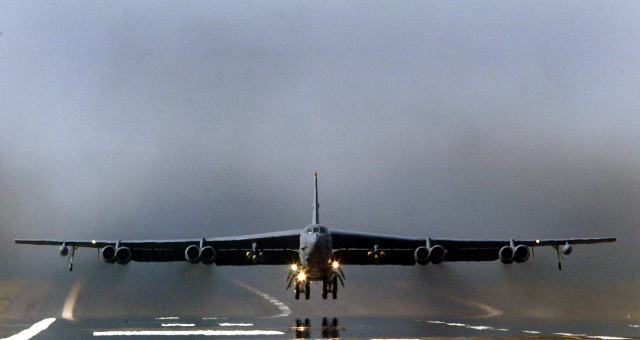How North Korea Plans to Survive a U.S. Attack
페이지 정보
작성자본문
주한 미육군에서도 근무한 적이 있는 예비역 미육군 대령 Daniel Davis가 기고한 글입니다.
이 분은 현재 미 국방 연구원에서 시니어 펠로우로 계시는 분입니다.
한국에서 근무시 남북간 적대적인 대치상황과 북의 전력과 전략을 잘 파악한 글로 보여서 퍼왔습니다.
이런 전문가들이 미국의 각급 싱크 탱크에 수천명이 포진 하고 있으니까 얼마나 파워풀하고
무서운 나라인지 실감이 납니다.
National Interest 퍼온글: 미공격에 예상하는 북의 대응 책략
How North Korea Plans to Survive a U.S. attack

A so-called preventive military strike would not only fail to resolve the threat to U.S. personnel and U.S. allies, but worsen it.
소위 말하는 예방 공격의 결과는 미국인과 동맹에 대한 위협을 제거하지 못하고 실패할 뿐만아니라 오히려 더 악화시킨다.
Last Friday National Security Advisor H. R. McMaster emphatically told reporters that despite what many have said to the contrary, “there is a military option” for North Korea. Tuesday afternoon at the United Nations, President Trump went even further, saying that if he felt certain conditions warranted it, then he would have no choice “but to totally destroy North Korea.” The president and his national security advisor, however, are wrong. Engaging in a “preventive war” with Pyongyang, as McMaster phrased it last month, would turn a tense situation into a catastrophic failure for America. There is no cost-effective military option and claiming there is only puts America’s security at risk.
지난 금요일 안보 정책 보좌관 인 H. R. McMaster는 기자 회견에서 많은 사람들이 반대에도 불구하고 "북한에대한 군사적 옵션이있다"고 강조했다. 화요일 오후 유엔에서 트럼프 대통령은 어떤 조건이 정당하다고 판단되면 "북한을 완전히 파멸시킬 것"이라는 것은 선택의 여지가 없다고 말했다. 그러나 대통령과 국가 안보 보좌관은 틀렸다. .McMaster가 지난 달에 표현한 것처럼 북한과의 "예방 전쟁"에 참여하는 것은 긴장된 상황을 미국에게 치명적인 실패로 만들 것이다. 비용 대비 효율적인 군사 옵션은 없으며 미국의 안보를 위험에 처하게 할 뿐이다.
One doesn’t have to be a military expert to see why a so-called preventive military strike would not only fail to resolve the threat to U.S. personnel and U.S. allies, but worsen it. Two anecdotes and a brief assessment of North Korean capability exposes the futility of “preventive” war.
I fought alongside McMaster in February 1991 at Desert Storm’s Battle of 73 Easting. Prior to our ground assault, the U.S. Air Force and other coalition planes saturated the Iraqi forces occupying Kuwait for an average of once every ten hours for forty-two days. Enemy tanks were the primary target. Iraqi armor had literally nowhere to hide in the open desert; their steel hulls were painfully clear from the skies and defenseless to air attacks.
군사 전문가가 아니어도 소위 예방 군사 공격이 왜 미국과 미국 동맹국에 대한 위협을 해결하지 못하고 악화시키는지를 알 수는 없다. 두 가지 일화와 북한의 능력에 대한 간단한 평가는 "예방적인"전쟁의 무의미 함을 드러낸다.
나는 1991 년 2 월에 사막 폭풍의 73 Easting 전투에서 McMaster와 함께 싸웠다. 우리의 지상 공격 전에는 미 공군과 다른 연합군이 쿠웨이트를 점령 한 이라크 군을 평균 40 시간 동안 매 10 시간에 한 번 무력화시켰다. 적 탱크가 주요 공격 대상이었다. 이라크 전차의 장갑은 말 그대로 사막에 숨길 곳이 없었고 그들의 탱크들은 무방비 상태에서 공중 공격으로 고통스럽게 궤멸당했다.
Yet as we discovered when we closed with the enemy, more than 80 percent of the enemy’s tanks and other armored vehicles had survived the air attacks. An enemy that can’t hide or defend itself can still survive sustained bombardment under near-perfect attack conditions, even in open desert.
In September 2011, I was at a U.S. Forward Operating Base in the Kunar Province of eastern Afghanistan when the base came under attack by members of the Taliban. They were positioned on the side of a mountain with a commanding view on our base located below. U.S. soldiers returned fire with heavy machine guns and 105 millimeter artillery shells for about thirty minutes, yet they were unable to silence the attackers.
그러나 우리 일방적인 공격이 끝났다고 생각했을떄 , 적의 탱크와 다른 장갑 차량의 80 % 이상이 공중 공격에서 살아남은 것을 발견했다. 엄폐나 방어가 불가능했음에도 적군은 여전히 사막 에서조차 거의 완벽한 공격 조건 하에서 지속적인 폭격을 견뎌 낼 수 있었다.
2011 년 9 월 아프가니스탄 동부 쿠 나르 (Qun Province)에있는 미국 전방 작전 기지에 탈레반 반군의 공격을 받았다. 그들은 아래에있는 우리 기지를 내려다 보는 위치에 있었고 미군은 중기관총과 105 밀리미터의 포탄로 약 30 분 동안 공격을가했지만 그들을 제압할 수 없었다.
Finally, a U.S. fighter jet made a bombing run on the enemy location on the mountain and destroyed the dismounted troops in a massive explosion. The rugged mountains of Afghanistan provided Taliban fighters—with no additional protection—the ability to withstand U.S. heavy weapons and artillery shells. Only when a fighter jet entered the scene were they destroyed.
The implications are clear: if missiles and unimpeded air power are insufficient to destroy enemy armor out in the open after forty-two days, and if men clothed in mere robes can survive on the surface of a mountain against heavy weapons, then the tens of thousands of North Korean artillery pieces, their mobile missile launchers, and hidden nuclear-missile silos would be able to withstand even the most withering and sustained attack.
마침내 미군 전투기가 산에서 적의 위치에 폭탄을 터뜨려 대폭적인 폭발로 적 부대를 제압했다. 아프가니스탄의 거친 산악지형으로 인해 거의 무방비의 탈레반 전투원들에게 미국의 중화기와 포탄을 견딜 수있는 여건을 제공했다. 전투기가 상공에 들어 왔을 때만 공격이 성공할 수 있었다.
그 의미는 분명하다. 42일간 미사일과 방해받지 않는 공군력이 적의 기갑부대를 없애기에 충분하지 않고, 허름한 옷을 입은 반군들이 중화기에 대항하여 산악에서 살아남을 수 있다면, 수천 개의 북한 포병 부대, 이동식 미사일 발사기 및 숨겨진 핵 미사일 사일로는 지속적인 엄청난 공격에도 살아 남을 것이다.
North Korean dictator Kim Jong-un’s likely response to a U.S. attack is not hard to figure out. In 1991 Saddam Hussein made a major strategic mistake by sitting idly by while U.S. missiles and bombs rained down on his helpless troops for over a month. Kim will certainly not make the same mistake. Instead, he will take one of several possible courses.
Kim will most likely launch a massive artillery strike of limited duration on the South Korean capital of Seoul, causing enormous damage and killing tens of thousands of South Korean citizens—and then stop his attack and warn that if the United States doesn’t cease its attack, then North Korea will obliterate the rest of Seoul, inflicting casualties in the hundreds of thousands. The most dangerous course of action for Kim would be to detonate a nuclear bomb on Seoul or launch a nuclear missile against Japan, killing millions—and then threatening to fire more if the U.S. does not cease-fire.
북한의 독재자 김정은의 미국 공격에 대한 반응은 그리 어렵지 않다. 1991 년 사담 후세인은 미국의 미사일과 폭탄이 무력한 군대에 1 개월 넘게 쏟아져 내리는 가운데 전략적 실수를 저질렀다. 김 정은이는 같은 실수를하지 않을 것이다. 대신, 그는 가능한 몇 가지 코스 중 하나를 택할 것입니다.
김 정은은 한국 서울에 막대한 규모의 포격을 시작하여 수만 명의 남한 국민을 희생시키고 수십만 명의 목숨을 앗아갈 것이다. 그리고 미국이 공격하면 북한은 나머지 서울을 철저히 파괴하여 엄청난 사상자를 생길 것이다.예상 가능한 가장 위험한 행동은 서울에서 핵폭탄을 터뜨리거나 일본에 핵 미사일을 발사하여 수백만 명의 목숨을 앗아간 다음 미국이 중단하지 않을 경우 더 많은 공격을 가하는 것이다.
President Trump would then be faced with an unimaginable decision: continue the attack and see potentially millions more die, or give in to Kim’s demands and stop the attack. The interests of the United States would be gravely harmed no matter what choice Trump makes at that point.
In case anyone believes there is even a theoretical possibility that a massive U.S. strike could take out Kim’s ability to attack Seoul, let me put that to rest immediately. For decades, North Korea has known about the destructive power of U.S. planes and has therefore hidden a substantial number of its conventional artillery pieces into the sides of mountains. The artillery pieces can be rolled into firing positions and then returned for reloading.
There are likely a large number of missile silos in the mountains that are tucked away in locations that the United States may not be able to locate. I was stationed in South Korea in the mid-1990s and observed firsthand the formidable Korean mountains. I also spent some time in the South’s underground bunkers and know how virtually impregnable they are to external attack.
트럼프는 상상할 수없는 결정에 직면하게 된다. 공격을 계속하고 잠재적으로 수백만 명이 죽는 것을 보거나 김의 협박으로 공격을 포기하던가. 트럼프가 그 시점에서 어떤 선택을 하든지 간에 미국의 이익은 심각하게 해를 입을 것이다.
미국의 엄청난 공격으로 김의 서울 공격 능력이 붕괴 될 수 있다는 이론적 인 가능성이 있다고 생각하는 사람이 있다면, 그 즉시 생각을 바꾸라. 북한은 수십 년 동안 미국 항공력 파괴력에 대해 알고 있었기 때문에 상당한 양의 포병전력을 산 속 지하 갱도에 숨겼다. 초탄 발사후 신속 재장전이 가능하도록.
미국이 파악하기 힘든 많은 수의 미사일 사일로가 있을 가능성이있다. 나는 1990 년대 중반 한국에 주둔 해 한국의 험한 산악지역을 직접 관찰했다. 나는 또한 한국의의 지하 벙커에서 근무했었고 그들이 실제로 외부 공격에 얼마나 잘 견딜 수 있는지도 알고 있다.
In addition to those unknown silo locations, North Korea also has many mobile launchers that will be hidden in underground storage facilities until it’s time to roll them out to fire. Its instructive to note that thousands of coalition planes were not able to prevent even the hapless Saddam Hussein from firing thirty-nine ballistic missiles from his mobile launchers during Desert Storm.
There is no viable preventive-war option for North Korea unless one is willing to absorb civilian casualties in the hundreds of thousands or millions. The Trump administration can and should, however, communicate an unambiguous and certain promise that if North Korea were to attack any U.S. personnel, citizens, or allied nations—or if the administration discovers that North Korea was about to launch such an attack—then Kim’s forces will be met with a powerful and punitive strike out of all proportion to the attack. That is a credible and justifiable use of U.S. military power.
The objective must be to prevent war, secure the lives of American and allied citizens, and to keep sustained economic and diplomatic pressure on North Korea to eventually give up its nuclear weapons. Diplomatic engagement combined with a credible military deterrent has a reasonable chance of accomplishing that outcome. Launching a misnamed “preventive” strike will fail catastrophically.
알 수없는 격납고 위치 이외에, 북한은 또한 유사시에 즉시 발사가능한 지하 저장 시설에 숨겨진 많은 이동식 발사대를 보유하고있다. 수천대의 연합군 공군기들이이 사담 후세인이 사막 폭풍 작전 기간에 모바일 발사기에서 발사 한 39 개의 탄도 미사일을 발사하는 것을 모두 막지 못했다는 점을 지적하고자 한다.
민간인 사상자를 수십만 또는 수백만 명씩 기꺼이 감내하지 않는 한, 북한에 대해 실행 가능한 예방 전쟁 옵션이 존재하지 않는다. 그러나 트럼프 행정부는 북한이 미국의 인사, 시민 또는 동맹국을 공격한다면 - 또는 북한 당국이 북한이 그러한 공격을 개시 할 것이라는 사실을 발견 할 경우, 김 정은의 군대는 공격에 비례하여 강력하고 징벌적인 공격을 받게 될 것이다. 그것은 미국의 군사력을 정당한 용도로 사용하는 것이다.
그 목적은 전쟁을 예방하고 미국인과 동맹국 국민의 생명을 지키며 북한에 핵 무기 포기를 요구하는 경제 및 외교적 압력을 지속적으로 유지하는 것이다. 외교적 압박와 믿을만한 군사 억지력이 합쳐지면 그 결과를 달성 할 수있는 합리적인 기회가 주어지지만 잘못된 "예방"공격이 발생한다면 그 피해는 대격변이라 할 정도로 끔찍할 것이다.
Daniel L. Davis is a senior fellow for Defense Priorities and a former lieutenant colonel in the U.S. Army
who retired in 2015 after twenty-one years, including four combat deployments
댓글목록
등록된 댓글이 없습니다.





